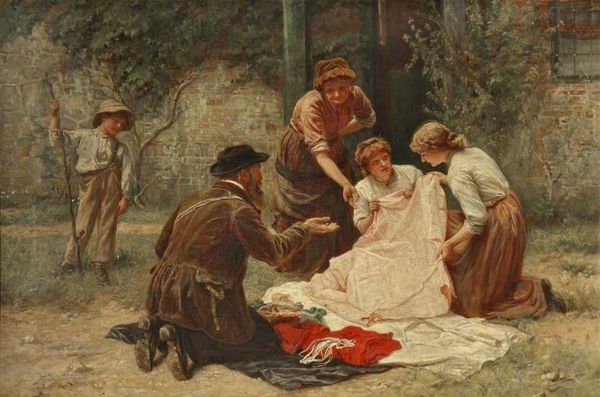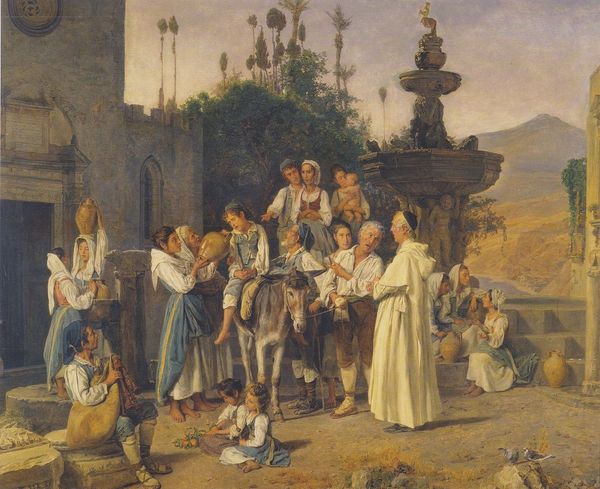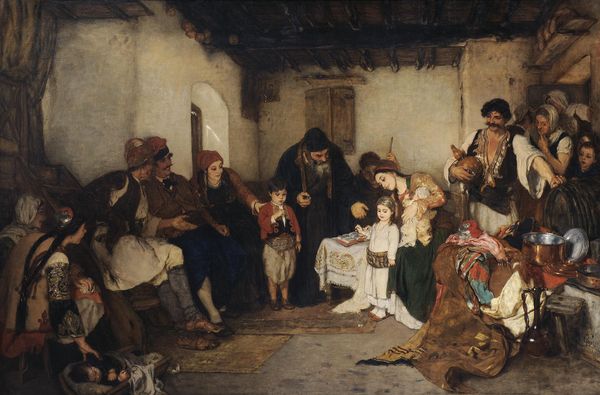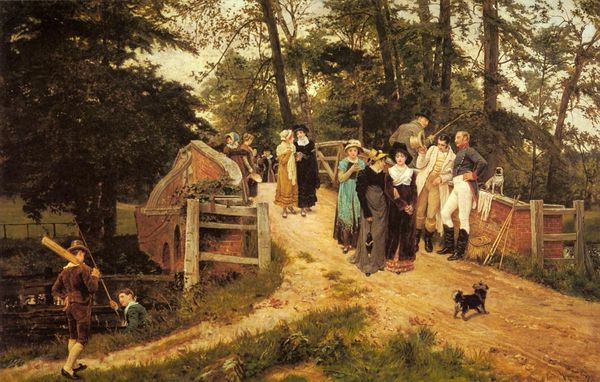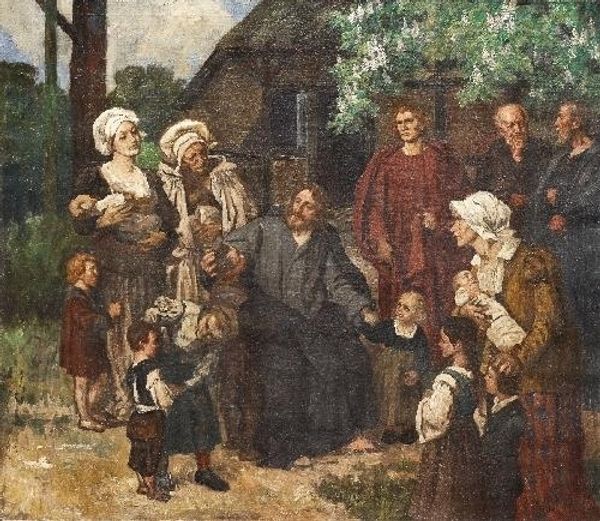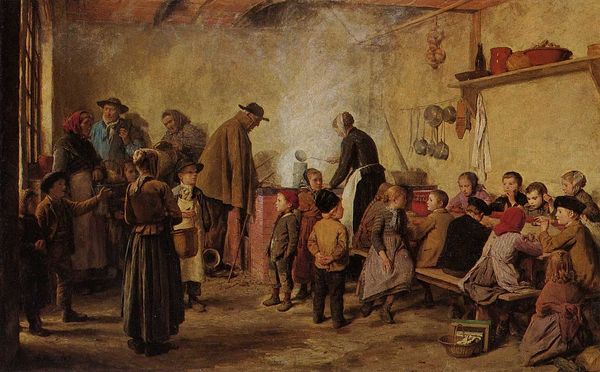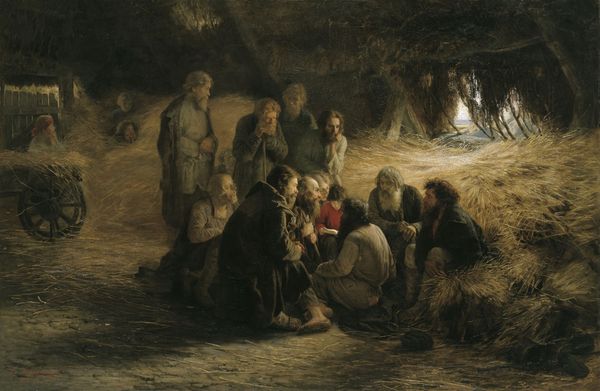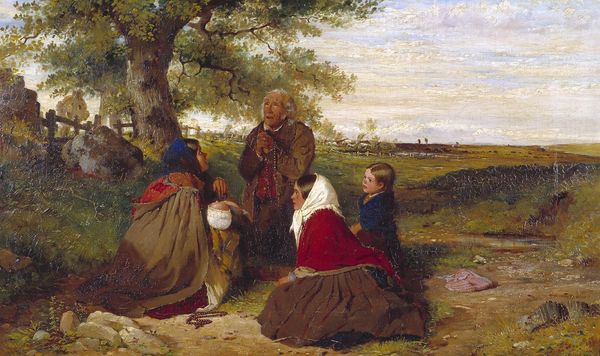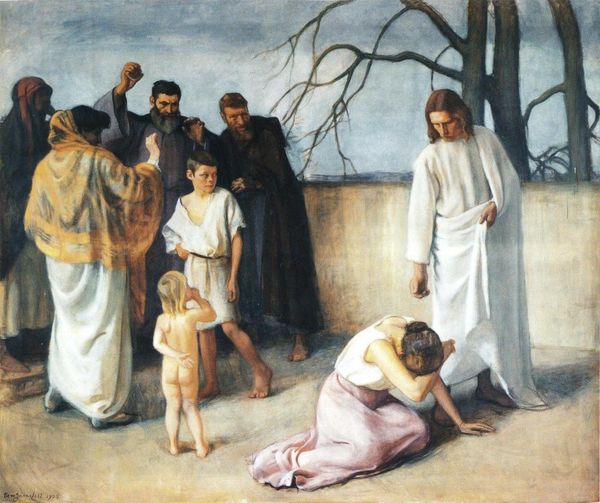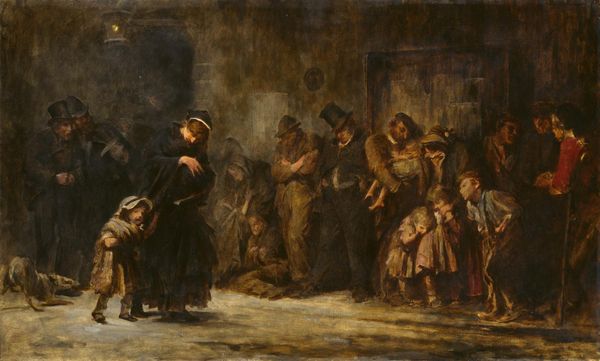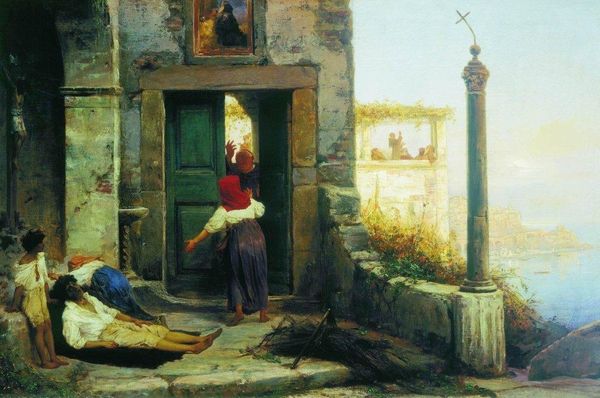
Copyright: Public domain
Editor: This is Albrecht Anker's "Child Funeral," painted in 1863. The scene is undeniably somber, filled with muted colors and heavy hearts. What can you tell me about what's going on here? Curator: Well, first we should consider the context. Child mortality rates were devastatingly high in the 19th century. Anker isn't just painting a scene; he's capturing a shared trauma and reflecting social inequalities and power dynamics of grief and loss. Editor: I hadn't thought about it like that. I was just thinking about the sad scene, but now, seeing the composition again, what strikes me is how many people of different ages are depicted. Is it normal for all children to attend funeral during that time? Curator: Precisely! The sheer number of children attending this funeral and even forming the choir tells a painful story about the frequency of childhood death. Look at the composition: the positioning of the adult figures compared to children and family’s interaction suggests that the roles gender and social expectation played in expressing sorrow publicly. Also the tools left besides the hole and what appears to be the working-class clothing for adults tell you which sector this tragedy touched in that community. Do you think it would have been similar among different classes? Editor: That's such an important point about societal structures that are reflected and highlighted through death and class. Are there things one should look out for about social status in art in general? Curator: Art often mirrors and reinforces societal norms. How does visual culture represent social strata and influence power relations? Exploring art is about more than aesthetics. This picture serves a moment in history with so many important underlying layers for consideration and exploration, don’t you think? Editor: Yes, definitely! It definitely changes my view to look beyond the obvious in art. Thank you so much!
Comments
No comments
Be the first to comment and join the conversation on the ultimate creative platform.
